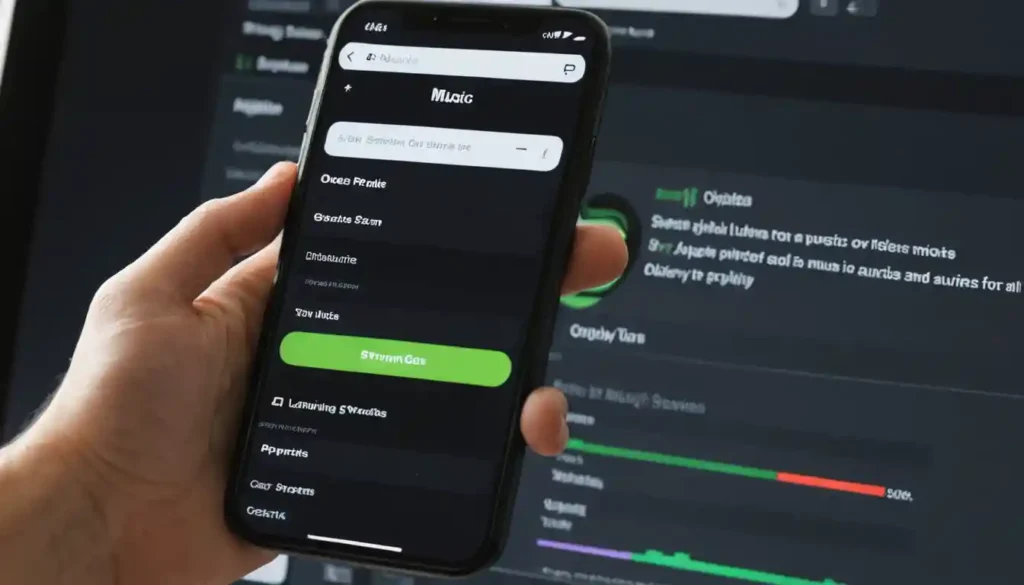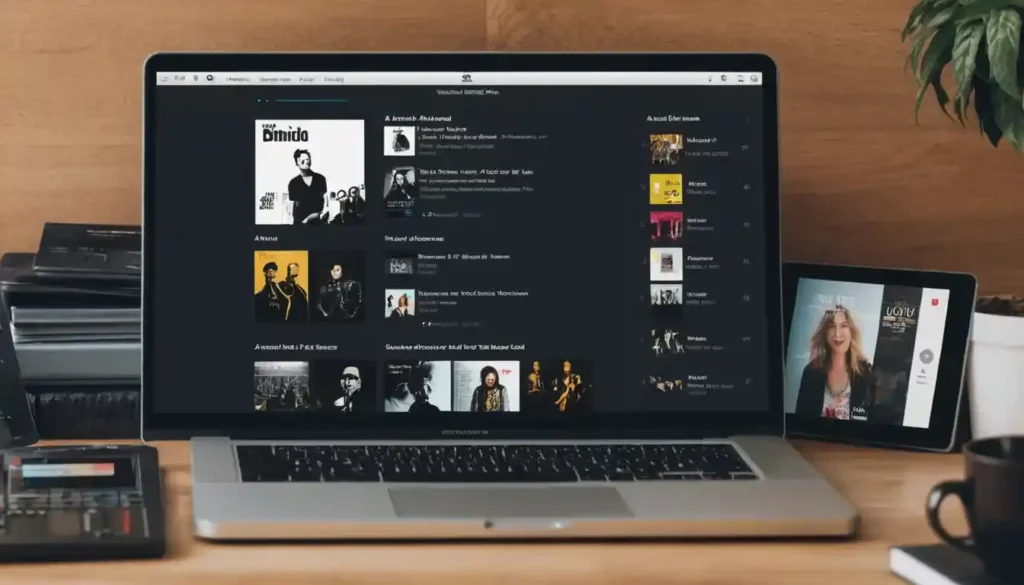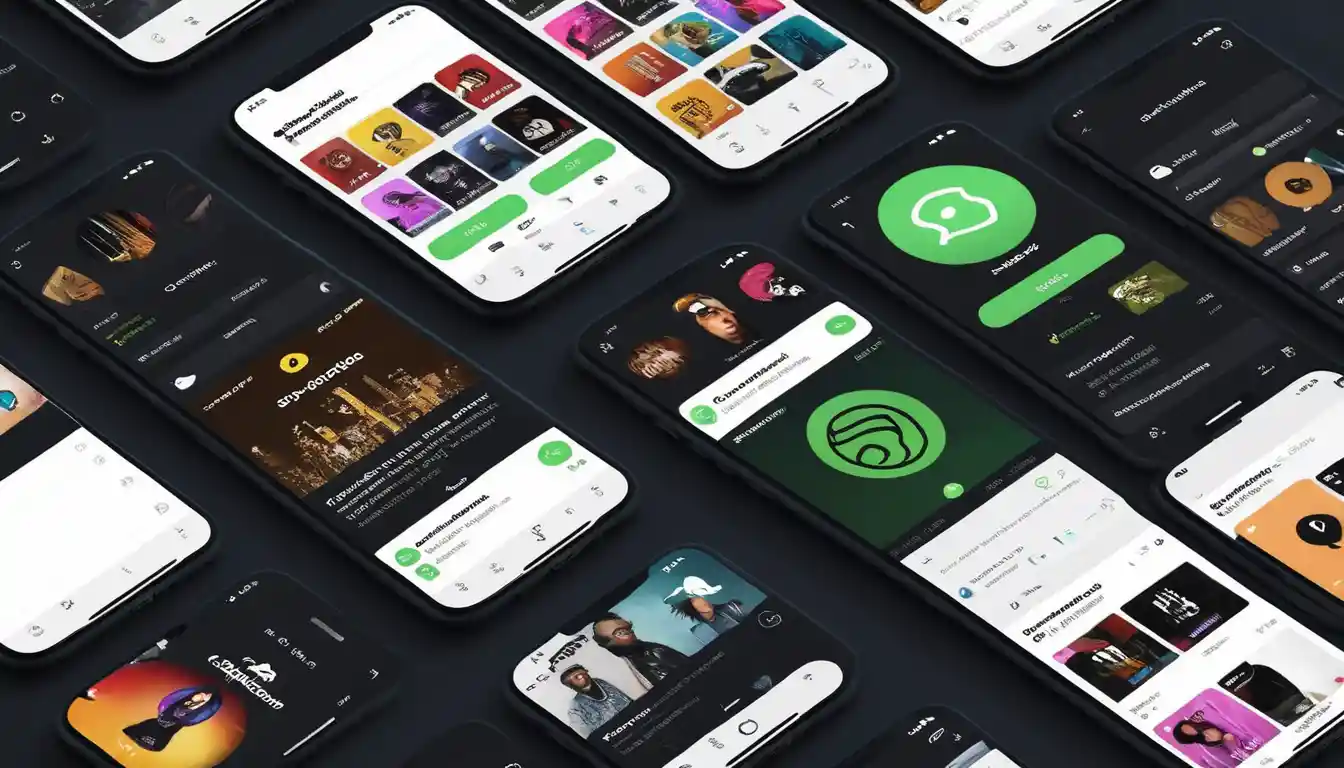Using music distribution services helped me get my songs on Spotify and Apple Music without hassle. It was super easy to set up, and I noticed more people listening to my music. These services made it simple to share my tracks worldwide and still keep control over my earnings.
Music distribution services help artists upload their music to streaming platforms like Spotify and Apple Music. They handle the process of getting your songs online, managing licenses, and collecting royalties so you can focus on creating.
Want to know how successful artists get their music everywhere? Music distribution services are the secret. Find out how they can simplify the process and grow your fanbase worldwide!
What Are Music Distribution Services? – Learn More!
Music distribution services help artists upload their songs to streaming platforms like Spotify and Apple Music. They handle tasks like licensing and collecting royalties, making the process easy. This allows musicians to focus on creating while their music reaches a global audience.
For independent artists, these services provide a simple way to share music without a record label. They take care of distribution and payments, so musicians can earn from their work and grow their fanbase worldwide.
Read Also: Financial Updates Aggr8finance – Stay Informed Today!
How Music Distribution Services Work – Understand the Process!
Music distribution services work by allowing artists to upload their music to a platform that then sends it to various streaming services like Spotify, Apple Music, and YouTube. Once uploaded, the service handles the licensing, metadata, and ensures your music is accessible on all platforms.

Additionally, these services collect royalties on your behalf, making sure you get paid when people stream or purchase your music. They also provide analytics so you can track your audience and understand how your music is performing worldwide.
Types of Music Distribution Services – Explore Options!
- Digital Distribution – These services upload your music to platforms like Spotify, Apple Music, and Amazon Music. Popular examples include TuneCore and DistroKid.
- Aggregators – Aggregators distribute your music to multiple platforms at once and offer additional services like royalty collection. CD Baby is a well-known example.
- DIY Distribution – These services let artists manage their own distribution with lower fees or even for free. Amuse is a popular platform for independent musicians.
- Physical Distribution – For artists selling physical copies like vinyl or CDs, these services help distribute through stores or direct-to-fan sales. Redeye Distribution is an example.
Key Features to Look for in a Music Distribution Service – Choose Wisely!
When choosing a music distribution service, consider these key features:
- Global Reach – Ensure the service distributes your music to major platforms like Spotify, Apple Music, YouTube, and more, reaching a wide audience.
- Royalties and Payments – Look for transparent royalty collection and fast, reliable payments to ensure you get paid for your streams and sales.
- Ease of Use – The platform should have a user-friendly interface, making it easy to upload music, manage releases, and track your performance.
- Customer Support – A responsive support team can help you solve any issues quickly, making it easier to focus on your music.
- Analytics – Access to performance data and insights allows you to track how your music is performing and adjust your strategy accordingly.
Pros and Cons of Popular Music Distribution Services – Weigh Choices!
DistroKid
- Pros: Fast uploads, affordable flat-rate pricing, unlimited song uploads.
- Cons: No physical distribution, limited customer support options.
TuneCore
- Pros: Strong global reach, excellent royalty collection, detailed analytics.
- Cons: Higher upfront fees, annual renewal fees for each release.
CD Baby
- Pros: Wide distribution network, both digital and physical, great customer service.
- Cons: Takes a percentage of royalties, initial setup fee for each release.
Amuse
- Pros: Free plan available, quick music release to streaming platforms.
- Cons: Limited customer support, fewer advanced features compared to paid services.
ReverbNation
- Pros: Strong artist community, offers promotional tools, easy music distribution.
- Cons: Higher fees for premium services, limited free options for music distribution.
How to Choose the Best Music Distribution Service for Your Needs – Make the Right Choice!
When choosing the best music distribution service, consider your budget and what platforms you want your music on, like Spotify or Apple Music. Services like DistroKid offer flat-rate pricing, while TuneCore charges per release. If you need physical distribution, look for CD Baby.
Think about extra features like analytics, royalty collection, and promotional tools. Choose a service that is easy to use and provides strong customer support. This will ensure the service meets your needs and helps grow your music career.
How Much Do Music Distribution Services Cost? – Plan Your Budget!

| Service | Pricing Model | Cost | Additional Info |
| DistroKid | Flat-rate | ~$19.99/year (unlimited uploads) | No extra fees for multiple releases |
| TuneCore | Per-release | ~$9.99 for a single, ~$29.99 for an album (annual) | Charges per release, renews yearly |
| Amuse | Free + Premium Options | Free plan, Premium plan starts at ~$24.99/year | Premium features and faster release available |
| CD Baby | Per-release | ~$9.95 for a single, ~$49 for an album (one-time fee) | Takes a percentage of royalties |
What Platforms Can I Distribute My Music To? – Expand Reach!
Here are the major platforms where you can distribute your music through music distribution services:
- Spotify – One of the most popular streaming platforms with millions of users worldwide.
- Apple Music – A leading music service with a large user base, offering high-quality audio streaming.
- Amazon Music – Available on multiple devices, including Amazon Echo and Fire TV, it’s a major player in music streaming.
- YouTube Music – Offers music streaming and video content, widely used for music discovery.
- Deezer – A global streaming service available in many countries with millions of songs.
- Tidal – Known for its high-fidelity sound quality and artist-friendly payout structure.
- Pandora – Popular in the U.S., offering personalized radio stations and music streaming.
- Napster – A streaming service with a loyal user base, offering both on-demand music and playlists.
- SoundCloud – A platform for independent artists to share and promote their music directly to fans.
- iHeartRadio – Features both radio streaming and music content, allowing global distribution.
These platforms help maximize your reach and grow your audience worldwide.
How Do Music Distribution Services Handle Licensing and Copyright? – Protect Your Music!
Music distribution services protect your music by registering your copyright and handling licensing agreements with platforms like Spotify and Apple Music. Some services, like CD Baby, automatically register your music to prevent unauthorized use. They ensure your music is legally protected and available online.
These services also collect royalties whenever your music is played or downloaded. Tools like Content ID on YouTube help block unauthorized uploads. Overall, they make sure you get paid and your music stays safe from misuse.
Read Also: 2gc4kme7751113176 – Vin Key Details You Should Know!
Tips for Maximizing Your Music Distribution Service – Boost Exposure!
Here are some tips to help you maximize your music distribution service:
- Upload High-Quality Music – Ensure your tracks are professionally mastered and in the right format for streaming platforms.
- Use Metadata Properly – Fill out all the details (song titles, artist names, genres) accurately to improve discoverability.
- Release Music Regularly – Keep your audience engaged by releasing new music consistently to stay visible on platforms.
- Promote Your Releases – Share your music on social media, blogs, and newsletters to drive traffic to your streaming links.
- Track Analytics – Use the performance data provided by the service to understand what’s working and adjust your strategy.
These steps can help you get the most out of your distribution service and grow your fanbase effectively.
Common Mistakes to Avoid When Using Music Distribution Services – Avoid Pitfalls!
Here are some common mistakes to avoid when using music distribution services:
- Poor Quality Uploads – Ensure your tracks are professionally mastered and formatted correctly to avoid low-quality sound on streaming platforms.
- Incomplete Metadata – Failing to provide accurate song titles, artist names, and genres can affect how your music is discovered by listeners.
- Not Setting Release Dates in Advance – Upload your music at least a few weeks before the release date to allow enough time for processing and promotion.
- Ignoring Platform-Specific Requirements – Different platforms may have unique rules or formats; make sure you’re familiar with them to avoid issues.
- Not Tracking Royalties – Don’t forget to regularly check your royalty statements to ensure you’re getting paid correctly for your streams and downloads.
By avoiding these mistakes, you can ensure a smoother distribution process and better results for your music.
Future of Music Distribution – Stay Ahead!
The future of music distribution is becoming more exciting with new tools and technologies. AI will improve how music is recommended, helping artists reach the right fans. Blockchain may give artists better control of their earnings and music ownership.

More direct-to-fan platforms will let artists sell music without middlemen, keeping more revenue. With virtual reality (VR) and augmented reality (AR) growing, artists can create unique ways to share their music and connect with listeners.
Frequently Asked Questions:
Which platforms can I distribute my music to?
Popular platforms include Spotify, Apple Music, Amazon Music, YouTube Music, and more.
What’s the difference between free and paid distribution services?
Free services may offer limited features, while paid ones provide better tools, faster uploads, and more control.
Do music distribution services handle copyright for my songs?
Some services offer copyright registration, but it’s usually up to the artist to secure their copyrights.
How long does it take for my music to go live on platforms?
It typically takes 3–7 days, but some services offer faster processing for an additional fee.
Can I switch distribution services after releasing music?
Yes, but you’ll need to re-upload your music and transfer rights to the new service.
Conclusion:
Music distribution services make it easy for artists to share their music on platforms like Spotify, Apple Music, and YouTube. They also help artists get paid through royalties and handle important details like licensing. Choosing the right service depends on your needs and budget. With the right distribution, you can reach more fans, grow your music career, and focus on creating great songs.
Read Also:




